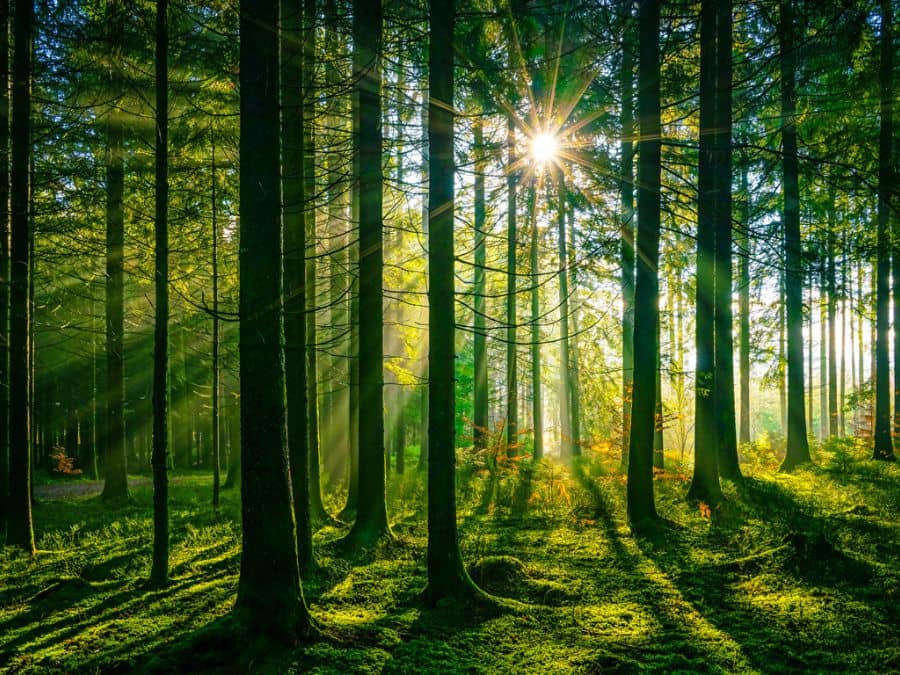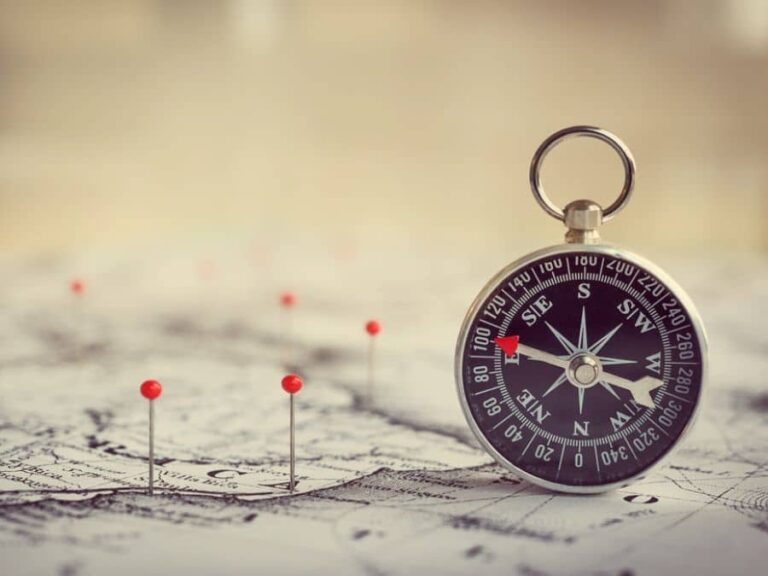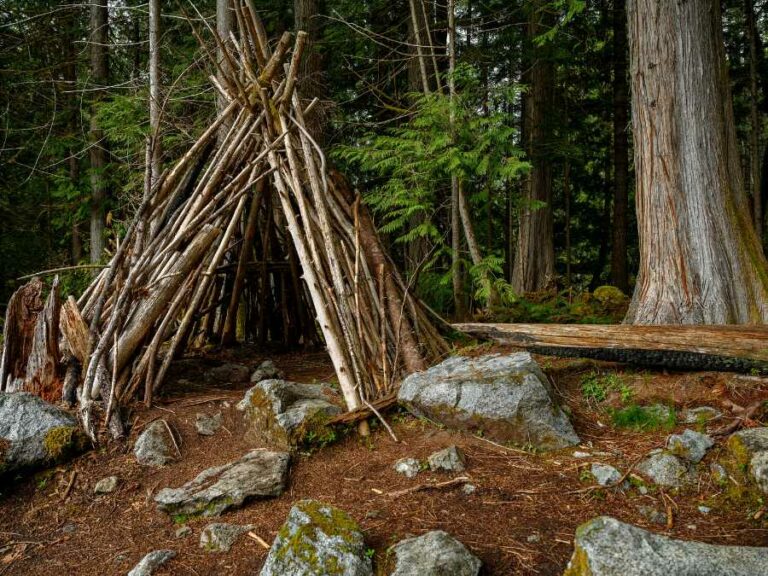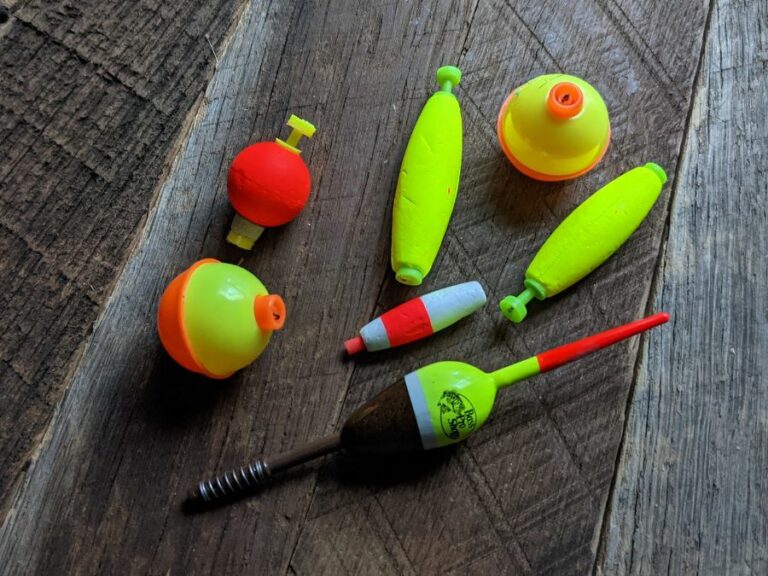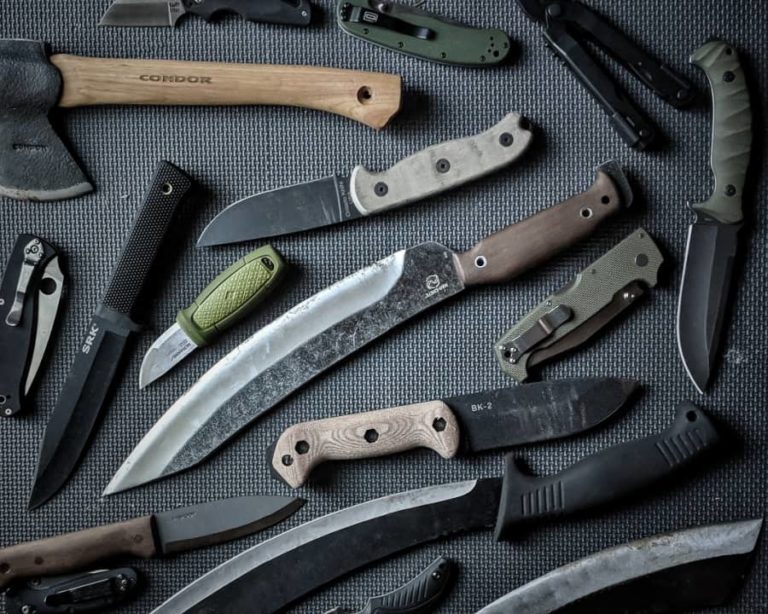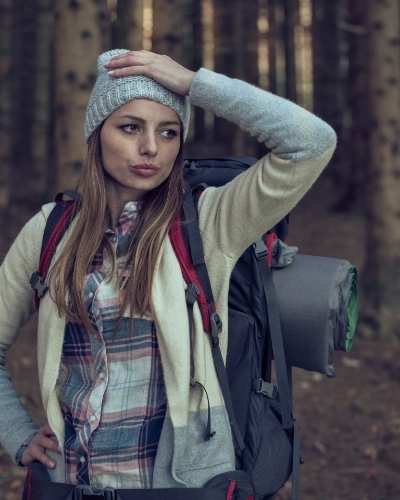109 Survival Tips To Keep You Alive In The Wilderness
The outdoors are a wonderful escape from modern life. We’ve had our share of adventures and if there is one rule we can vouch by it’s this: nothing ever goes according to plan. This could be anything from getting lost to not making the progress you were expecting on a difficult trip. Over the years, we have been backpacking, off trail waterfall hunting, car camping, exploring, fort building and just plain spending time in the woods. By no means are any of us here hardcore survival experts, but we have done enough in the back-country to have a better appreciation of how close a catastrophe is.
Whether that is dunking your sleeping bag in a water crossing or missing a trail marker in a Wilderness Area, being prepared for the unexpected will help in almost any situation. One piece of advice that is not on our list is keeping calm! This is the number one skill to master and not just in the wilderness. Being able to think straight and make good decisions will keep you and anyone you’re responsible for that much safer.
Regardless of your skill level, things happen in the wild that you can’t always control. That’s where your expertise as a woodsman could save your life or the life of someone in your group. You probably (hopefully!) will not use every one of these, but here are 109 tips that might save your life in the wilderness.
Fire and Warmth
Fire is the key to survival in the wilderness, it is used to cook and clean and bring light and heat and sometimes can be used for protection or signalling. It has unlimited uses and thankfully there are almost unlimited ways to make fire – if you know how.
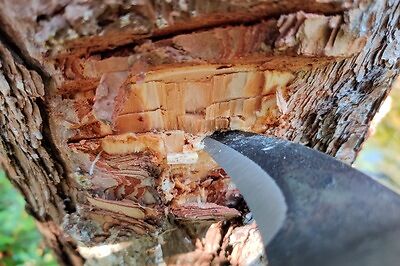
1. If you have hand sanitizer, this can also be used to start a fire, it is very flammable. Be careful when lighting this, it burns with a smokeless light blue flame that can be invisible to the naked eye, but fear not, sticks and leaves will still catch fire on it.
2. Coal Fungus is an invaluable firestarter in the wild. It is easy to identify because it looks like a piece of charcoal growing on the side of dead trees. Break it open to reveal a dusty core that is very flammable.
3. Another fungus that serves a similar function is Horses Hooves (it looks like a horses hoof). The first layer inside the mushroom is very flammable and smolders for a long time.
4. Pine cones are easy to find and make good kindling. Put them in the fire at the beginning and watch them burn.
5. The foam inside a pack used to pad the shoulders is very very flammable. If the situation requires it, you can cut a small piece out of your pack to use as a fire starter.
6. The inside fuzz of your socks is a very powerful fire starter, and can be collected easily enough.
7. When batteries run out and light is required, you can easily make a torch if you must relocate at night (although we do not recommend moving at night). Take a branch and split it at the end, then stuff birch bark or other flammable substances in the split end. Light the birch and you have a torch.
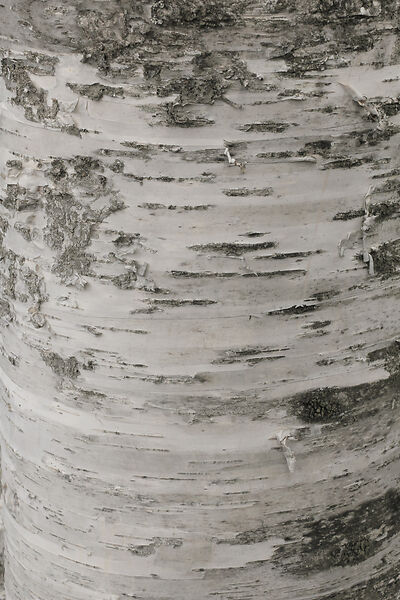
8. Birch is a unique tree because it lights best when it is still alive. If you find birch on the ground it is not optimal for fire starting because the resin on the bark has probably fallen off in decay. Take the live birch and grind it up into tiny bits for kindling.
9. Birch you find on the ground is not totally useless; line the outside of your makeshift shelter with this bark to have natural water resistance and heat reflection.
10. In the wilderness, your eyes are one of your most valuable assets, but also the most fragile. Using birch, you can cut tiny slits into the bark and make a basic pair of sunglasses. Perfect for protection from the sun. Long sun exposure to the naked eye can damage your sight, and if you go blind in the wilderness you’re in big trouble.
11. If you need to make a fire but all the wood is wet, use a small blade or a pencil sharpener to slice tiny sticks into wooden shavings, most of the time the center will be dry and easy to light.
12. Thistle plants are usually grown in large clumps, so grab a lot if you will need to be making fires soon, they are very flammable and easy to carry.
14. Cattail seed pods have thousands of seeds on that sausage, break it off and use it for kindling.
15. In the wild, feathers are not an uncommon occurrence. But the fluffy parts of the feather burst into flame when sparked; these can be perfect for starting a fire quickly.
16. Insulate your shelter and sleeping place with pine or other green materials to keep you from the cold ground or atmosphere.
17. Dead pine needles are also amazing tinder, and most forest floors will be covered with them all year round.
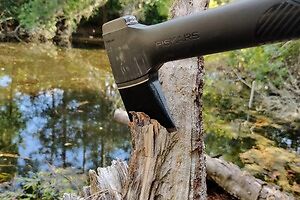
18. Pine resin is often found encrusted into the bark of the tree. It has many medicinal purposes, which I will cover later, but it is also good for fire starting. Crushing the resin into small grain or dust will increase its chances of igniting. Even if it is gooey, it can still be ignited.
20. Fatwood is the heart of a tree, and it is the source of all that resin we were just discussing. Thin shavings and dust from fatwood are very flammable and can catch a spark easily.
21. Putting living plants over your fire can turn your fire into a signal fire, the living greens will turn the smoke into a dense white cloud that can be seen for miles.
22. An emergency blanket is an invaluable tool to have in the wilderness and very inexpensive. These blankets can be used to line your shelter or sleeping bag for warmth.
23. Emergency blankets are also good in hot weather, use the reflecting side of the blanket to reflect the sun’s heat away from you.
24. They can also be used with a fire. Wrap the blanket around sticks and place the sticks around the fire. The blanket will reflect that heat back at you so it doesn’t go to waste.
25. An emergency blanket can also be used as a large mirror if you need to signal an aircraft for help.
26. If you don’t have a space blanket, then make a fire reflector out of natural materials. Place four steaks in the ground to make a thin rectangle, then stack green sticks and branches in between them to reflect the heat back, it’s not as efficient as the emergency blanket, but it’ll get the job done.
27. If your plastic water bottle has convex curves, you can use that as an impromptu magnifying glass for starting fires.
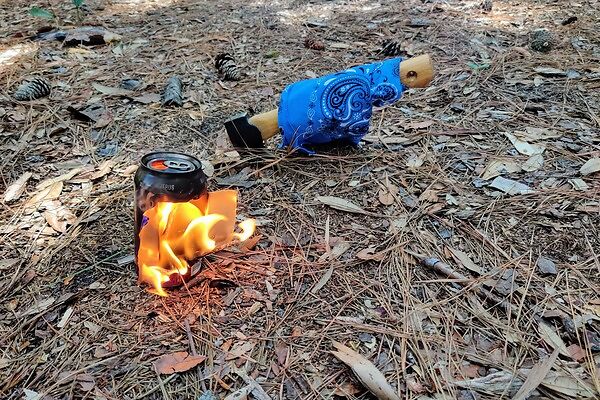
28. In a pinch, you can gather some water into a plastic bag and form it into a bulb. Use this as a makeshift magnifying glass to start a fire.
29. If you have the space, try to add a party trick candle that goes out then restarts, this is very helpful if you are on your last match or your lighter is running out, then you can transfer the fire to the candle and buy yourself some time.
30. Insulate yourself by stuffing your clothes with dried leaves and straw, this traps your body heat.
31. If you happen across any old soda cans, you can craft that into a windproof stove. Just cut the sides of it open by making a capital I shaped cut. Then bend the doors open like double doors and set a small fire inside.
10 Best Ways To Start A Survival Fire
Check out The Gray Bearded Green Beret on YouTube, Joshua Enyart is the real deal when it comes to wilderness skills and survival. We love his videos and his no nonsense style and advice.
Water
Water is probably the most important resource in the wilderness. Dehydration can sometimes spell death, so make sure you try to stay hydrated. The human body will die in 3 days if it does not get water.
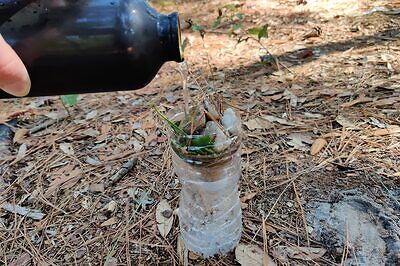
32. Try to filter your water before you purify it. It can have bits and particles that you definitely don’t want to consume. You can make a tiered water filter by placing charcoal in a (clean) sock or buff, then stacking sand on the charcoal, then stuffing grass on the top. The grass can catch all the big debris, and the sand can capture all the little particles, and finally the charcoal can draw out harmful chemicals still in the water. After all this, boil the water if you have fire and the time.
33. You can gather and ring out big bundles of moss to gather water if it has rained recently. It might not taste amazing but water can be boiled for purification, and if you’re out of other options it can be worth it.
34. Dew from grass can also be harvested for water. Tie clothes around your ankles and legs then walk through the grass before sunrise. Then take those clothes and ring them out in a container to collect the water.
35. Tinfoil can be used to craft a makeshift bowl, place your fist in the middle and then wrap the sides around it. This can be used to boil water next to a fire.
36. Placing your tent pegs into the ground can make a canteen holder than can be used when boiling water (the tent pegs won’t melt or burn).
37. Despite what you may have heard, DO NOT drink your own urine! Drinking your dehydrated urine will only dehydrate you further.
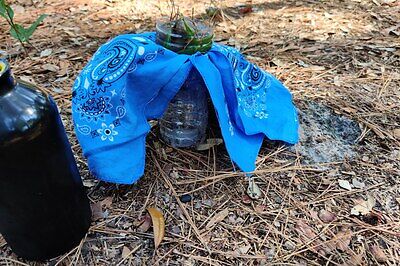
38. Placing a piece of duct tape on the edge of a canteen will reduce the chances of burning yourself with it after boiling water.
39. Placing tin foil over a canteen will make the water inside boil faster, saving time and resources.
40. Be careful when eating snow, if possible melt snow before you eat it, the snow will reduce your core temperature and make the body work overtime to stay warm, burning unnecessary calories.
41. Plastic water bottles can be used to boil water if that is all you have. As long as there is water in the bottle it will not deform in the fire, make sure the lid is open when you boil the water. Only use this as a last resort, because the plastic can release toxic chemicals into the water.
First Aid
Injures happen, and usually you have a kit to help you, but sometimes you won’t. These tips will help you in the event you do not have a first aid kit and need to help yourself or a party member.
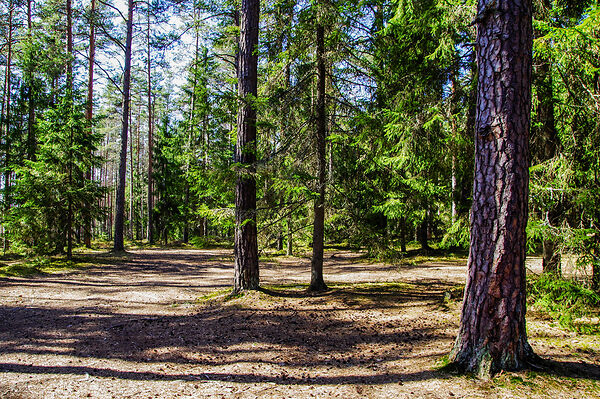
42. Rubbing raw crab apples over a wound will help tighten up the skin and blood vessels around the injury.
43. The pine resin (discussed earlier) is an effective antiseptic. Mix with water to make a liquid for external injuries or gurgle to combat throat, mouth, or even tooth infections.
44. If pine sap is found fresh when still gooey and wet then it can be applied directly to a wound.
45. Dock leaf sap has a natural antihistamine. Chew on the leaf and then put the goo over a sting or bite to relieve the pain or itching.
46. High percentage alcohol can be used as a last resort antiseptic. Anything 150 proof or higher can be used to treat wounds.
47. Drinking unpurified water can lead to intestinal infection very quickly. If you find yourself in this situation, make tea using acorns or oak bark. These are very high in tannic acid which will combat the effects of intestinal problems. It can also be gurgled for throat infections. Tannic acid is harmful to your liver when consumed in large amounts, so do not drink these teas just for kicks.
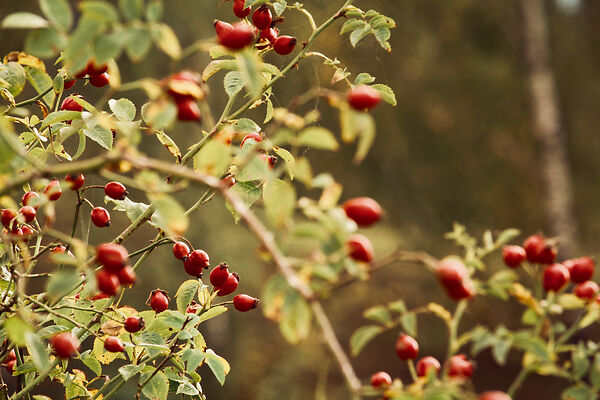
48. Always purify your water before you make a tonic out of it. Even though the tea is made with plants, you do not want anything else in your brew.
49. Leaves from a blackberry plant can be used in the same way, but the tannic acid is much lower than acorns and oak bark. Blackberry tea can be used to treat gum swelling if used as a mouthwash.
50. The fruit of the rose hip plant makes a different tea for constipation relief. Cut out the center of the fruit and use that to make the tea. Also, the fleshy part of the fruit contains a lot of vitamin C and can be helpful in treating colds. It also can be used to treat a UTI.
51. Dandelion tea will also make a weaker constipation relief concoction, but its main draw is how it cleanses your liver. (The whole plant is edible as well.)
52. The roots of a dandelion can be harvested as well. When eaten, they are quite bitter, but when roasted till brown and crushed/ground in water it makes dandelion coffee! No caffeine (unfortunately) but it’s still a pleasant drink.
53. Milk Thistle can also protect and heal the liver from damage and is good to use after drinking a high tannic acid solution. These are easy to identify because the leaves resemble cobwebs.
54. Lavender tea is made using the flower buds and is a cure for insomnia and will relax your muscles. It can also soothe an upset stomach or a headache.
55. Not related to tea, but the lavender plant is also a natural bug repellent, rub the leaves onto your skin to keep the bugs away.
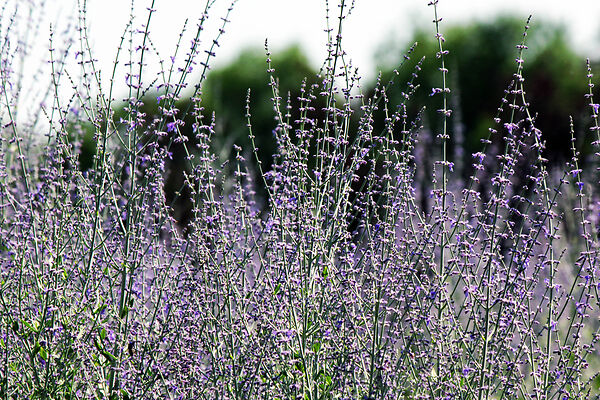
56. Nettle Tea can soothe the effects of asthma and colds; boil the young leaves for best results.
57. Mint tea is a decongestant so it can treat cold and flu symptoms. Mint is also very nutritious. When making this tea, the leaves are best because they have the best flavor, but the stem won’t harm you.
58. Chamomile tea is an anti-inflammatory and antibacterial immune system booster. The tea can also treat IBS.
59. Pine and Spruce Needle tea is also high in vitamin C, so it can be effective as a cold and flu treatment.
60. Birch sap is fit for human consumption. Cut deep enough into the tree to cause a leak, then boil the sap. You can have this tea straight or add it to an existing tea as a sweetener. It is also highly nutritious.
61. Inner Willow bark can be chewed or made into tea to relieve the symptoms of fever and is an effective pain reliever. If you are allergic to aspirin, DO NOT consume this bark.
62. Elderflower tea can be brewed into an immune booster and sooth the effects of allergies. ONLY HARVEST THE FLOWERS, the leaves and bark are toxic!
63. Grinding up charcoal and adding some water creates toothpaste. The charcoal is rough enough to clean your teeth but not too rough to damage them.
64. Snow blindness feels like you have grit or sand in your eye and can make you go blind (obviously) if you are exposed for too long. If you do not have sunglasses and cannot make them, you can smear charcoal under your eyes to reflect the sun out of your eyes.
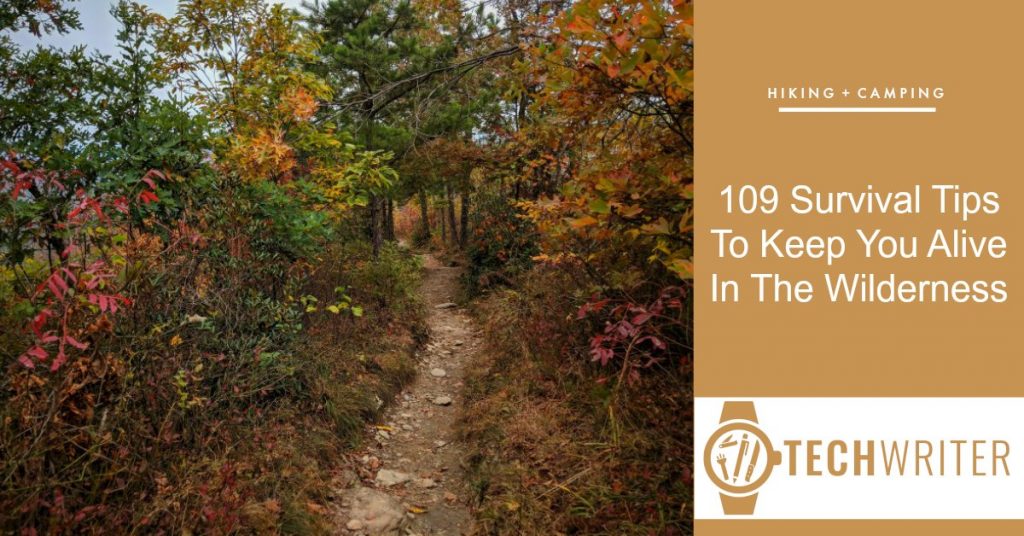
Food In The Wild
Eating in the wild is usually a last resort; most experienced outdoorsmen bring more than enough food for their trip. But as discussed, we know that anything can happen in the wilderness and we’re going to make sure you’re ready. These foods are by no means the only edibles in the outdoors, and it should go without saying that before you eat ANYTHING, make sure you know exactly what it is!
65. Never eat a plant or fungus that you are not 100% sure about. The last thing you need in the wilderness is a disease.
66. If you can, boil your plant findings before you eat them to try to boil off any harmful bacteria or impurities.
67. Primrose is one of the first plants to grow in spring and an abundant source of food. All parts of this plant are edible and the leaves taste like lettuce. The roots are high in carbohydrates and protein. It can also be found in summer and fall.
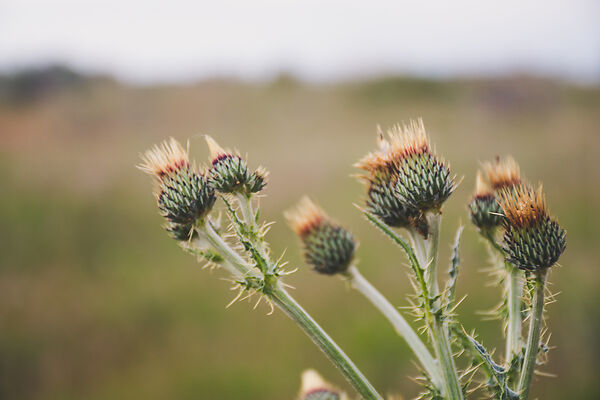
68. Fireweed is an impressively tall plant (8 feet) that grows in colonies and is red and purple. All parts of this plant are edible but the real jewel is inside the stem. Split the stem and pick out the pale green/white piff, it’s full of nutrients and tastes similar to a cucumber. It also does not require cleaning, so no boiling necessary, a perfect snack if you don’t want to set up a fire.
69. Young Fireweed is also edible, but harder to spot. The small red leaves reach out of the ground and are perfect to eat. The redder the better, as those are more sweet. The root of this young weed is a massive tap root filled with carbs and calories. Plus, this root is very sweet, just like the leaves.
70. Thistle is a good firestarter (as discussed), but parts are also edible. Even though the plant is full of spikes the substantial tap roots are edible, and filled with carbs and sugars.
71. Dandelion is very common across all terrains and the whole plant is edible. However, the smaller leaves are much sweeter than the bigger ones. The whole plant is rich in potassium and iron, more so than spinach.
72. Stinging Nettles are vitamin rich plants that, when handled correctly, can make a perfect snack. These needles will inject acid into you if you mishandle them, but the acid is only bothersome not poisonous. When harvesting the leaves, grab the top most ones because they are sweeter, then put the leaves over (not in) the fire. The heat will completely destroy the needles and make them safe for consumption.
73. Dead Nettles look identical to Stinging Nettles – minus the stinging needles – so go to town when you find them, no needles to worry about.
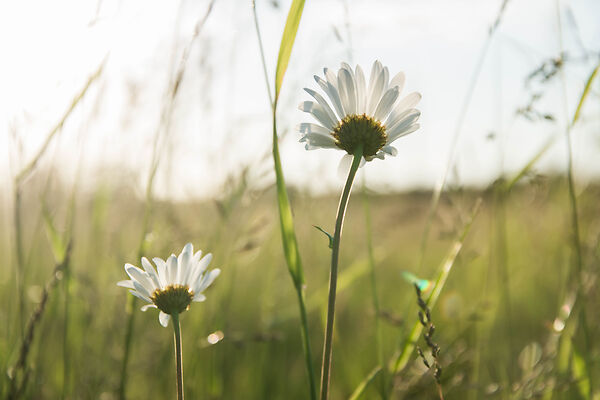
74. The Daisy is a perfect flower for eating; they are easy to pick up and eat and high in sugar.
75. Moon Daisy is just a bigger daisy and almost the same in every way except for the smell. When crushed, they will release a nauseating smell, but the middle yellow disk does not smell and can be consumed without worry.
76. Hawthorn is a red berried plant – one of the only red berries that should be consumed in the wild. When identifying these trees, you must look at the leaves to ensure that this vegetation is not poisonous. The berries are blood red and have a black crater in the base, its most defining feature. Inside there is a pit, so be careful.
77. Rowan Berry, or Mountain Ash, is another rare red berry that you can eat. The leaf looks like ladder rungs and the berries are toxic when raw, but when boiled they are completely harmless, and (bonus) they don’t have a pit!
78. Garlic Mustard is a highly prized wild food. They love to grow near bodies of water. When the leaves are crushed they smell like garlic, and it’s one of the best tasting foods in the wild. The tasty leaves appear in the spring and last until fall. Stick to the top leaves because they are the best tasting.
79. Red Clover has a very bulbous flower that is extremely high in protein, more than spinach and kale combined. Both the flowers and leaves are edible and taste like peas.
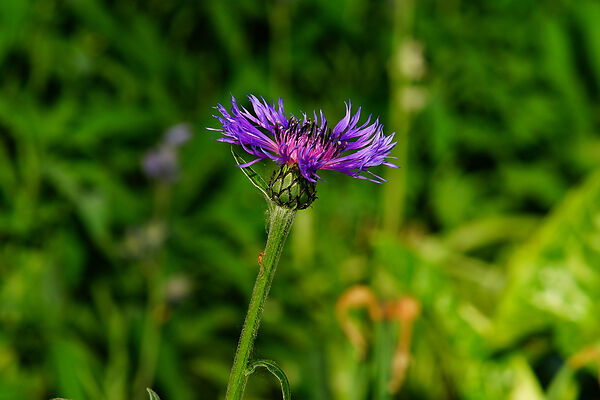
80. Knapweed looks like a Thistle from far away but when you get closer it looks more like a Clover. This plant does not have any spikes and it is completely safe to eat but be careful, the bud underneath the flower is very tough and not very chewable. The bud is called the ‘hard head’ for a reason.
81. Usually close by is Greater Knapweed, identical to Knapweed in most ways except for its larger and scruffier appearance. The bud is once again a little too hard to consume, so stick to the flowers for an easy meal.
82. Burdock is a large cluster of big leaves, also known as elephant ears. These plants thrive in spring and summer and are composed of many stems. Both the ears and the stem can be consumed, but the real prize is the edible taproot located beneath the earth. It can be almost 30 centimeters in length, and once you peel this root or boil it you can eat the whole thing. It also tastes similar to a carrot!
83. Elderberry is grown in large, droopy clumps and is considered to be a superfood based on its nutritional value. These are superior to almost anything else you will find in the wilderness. These berries cannot be eaten raw because they are mildly toxic; also avoid eating the stem because these are quite toxic as well.
84. Blackberry is probably the most easily recognizable food, and usually the fastest way to find this fruit is to wait for your pants to be snagged on the brambles. Follow the vines to your fruit. These fruits can be eaten raw, but ensure that you have the proper bush. If you remove the spikes from the leaves these can be eaten as well, and as a bonus, the leaves are available all year round.
85. Pineapple Weed is identified by its bulbous head that looks like a miniature pineapple. It has no petals and it also has thin, wiry leaves. When any part of this plant is crushed it will release the odor of fresh pineapple. Everything above ground is edible and tastes like a very citrusy pineapple.
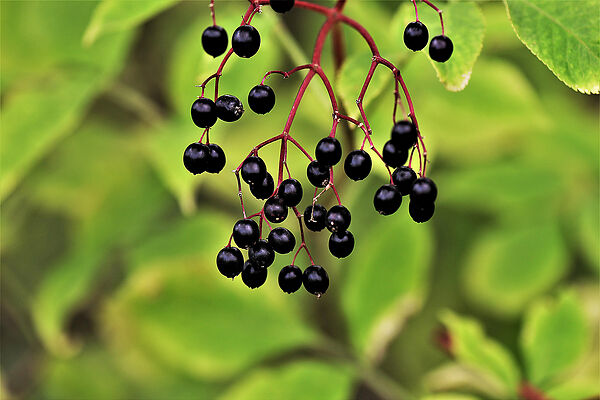
86. Rosehip can also be eaten after pollen season when the hips develop. These hips look like oval baby tomatoes with a shoot out the bottom. Cut the fruit in half and remove the seeds from the middle and then you’re ready to feast.
87. Crab Apples vary in color and size. Wild apples are completely nontoxic, although they are too bitter to eat without some preparation. You must gather the apples and dice them into small bits and boil them in water. Leave them boiling until all the water has evaporated, what you have left over is a chunky applesauce that is completely harmless and tastes a little like apple pie.
88. Pine Needles are an evergreen food source that tastes mildly of mint. Usually these needles grow very high off the ground so you might need to settle for ones that have fallen to earth. These needles do not have many calories but you can still eat them or make them into a tea.
90. Pine nuts are the sheddings of the pinecones and they contain more calories than a peanut. These nuts are a staple in Italian Cuisine and are found around the bases of pine trees, sometimes buried.
91. Poppy is easy to spot and very beautiful, but they are only edible once the poppy petals have fallen away and the oval pod is left on the stem. Once the pod turns brown crack it open and you will see hundreds of poppy seeds (just like on the bagel). These seeds are one of the highest sources of calories you can find in the wild. Gram for gram they have 5 times more calories than chicken breast.
92. A crushed up ball of tinfoil can be used to clean your cook kit, removing the dried food particles that are prone to mold.
93. If you are low on provisions, eat your food at night, your body will need the calories at night to keep you warm, so give it the fuel it needs.
94. If you can spare a zipper you can create an improvised fish hook. Just take the bottom of the zipper handle and break it and bend it to a 90 degree angle, then use a rock to grind it down to a point.
Miscellaneous
These next tips don’t fall under any specific categories but they have their uses and we wanted to share them with you.
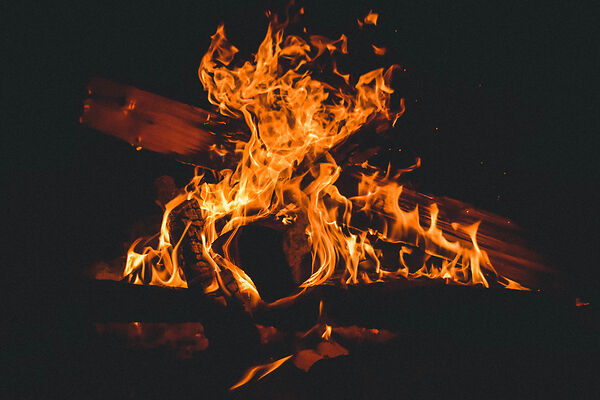
96. Make sure your compass is kept in a waterproof bag, oftentimes compasses are not waterproof and even a single drop of water can stop the compass from having an accurate reading.
97. Used shotgun shells can be melted down over a fire and reshaped into something else. Poking your knife through the shells while they melt can make them into arrowheads. Trim off the excess material and stuff the empty space with clay or pine resin to give it weight.
98. If you are in the northern hemisphere, when the sun is at its highest (noon for the summer and 2:00pm for the winter) walking directly towards it will take you south.
99. You can fire-harden a tool or weapon by placing it over a fire so all the moisture evaporates but the object doesn’t burn, this increases the tools durability.
100. Paracord over a flame will start to melt, this makes it an easy glue source. Once it’s melted you have a few seconds to apply it to an object before it hardens.
101. You can fire-harden a tool or weapon by placing it over a fire so all the moisture evaporates but the object doesn’t burn, this increases the tools durability.
102. Large industrial trash bags do not take up much space but they are more than worth it. You can stuff dead grass and leaves into them to make a bed, they can also be used as: emergency shelters, ponchos, bivy bags, water collection and storage, or just a moisture barrier to keep your body off the wet ground.
103. A buff or scarf also has many uses in the wild. It can be a tourniquet, bandage, water filter, sun shade, firewood carrier, and a big net.
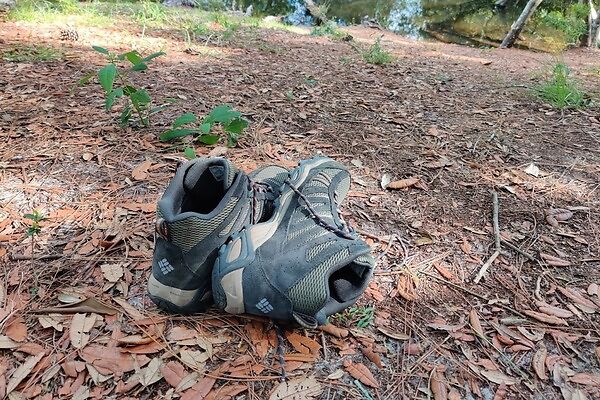
104. Adding duct tape is also a valuable addition to your kit, it can patch up almost anything.
105. A red sky in the morning usually means a storm is coming that day and you might want to hunker down and wait out mother nature.
106. If your boots are waterproof and get water in them they will have a challenge drying. Placing them by the fire will not do the trick, so gather up large rocks and place them in the fire. After they are nice and hot, place those rocks into your boots, this will try the inside.
107. If you are in the northern hemisphere and you need to find north take your (analogue) watch and point the hour hand directly at the sun. This watch needs to be set to the proper time. The midpoint between the hour hand and 12 on the clock is south, so the opposite would be north.
108. If you don’t have a watch look around for trees with moss. Moss will grow farthest away from a light source, so moss will grow on the northern side of a tree.
109. If it’s night time and you need to find North look for the North Star. First you must find the big dipper. Look around for the cooking pan constellation. Find the pan and look at the two stars that make up the side opposite the handle. Follow the line those two stars make up and up until you see a bright star, that is the North Star. It will always point true north!
So there you have it! Our ultimate list for surviving in the wild. We hope that you don’t need to use any of these tips, but if the time does come, you will be well prepared for whatever adventure awaits you. And even if you never have to use any of them, you can still impress your friends with your survival know-how. If you want to learn more about wilderness survival check out our list of awesome survival books.
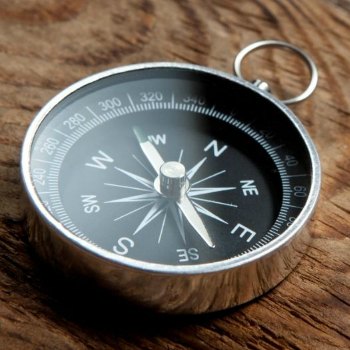
Rory Witkowski is a adventurous and outgoing contributor to Tech Writer EDC. His work appears on several websites and he strives to put forth interesting and meaningful content. Based in Charlotte, North Carolina, Rory is a senior creator at Coastal Market Strategies.

